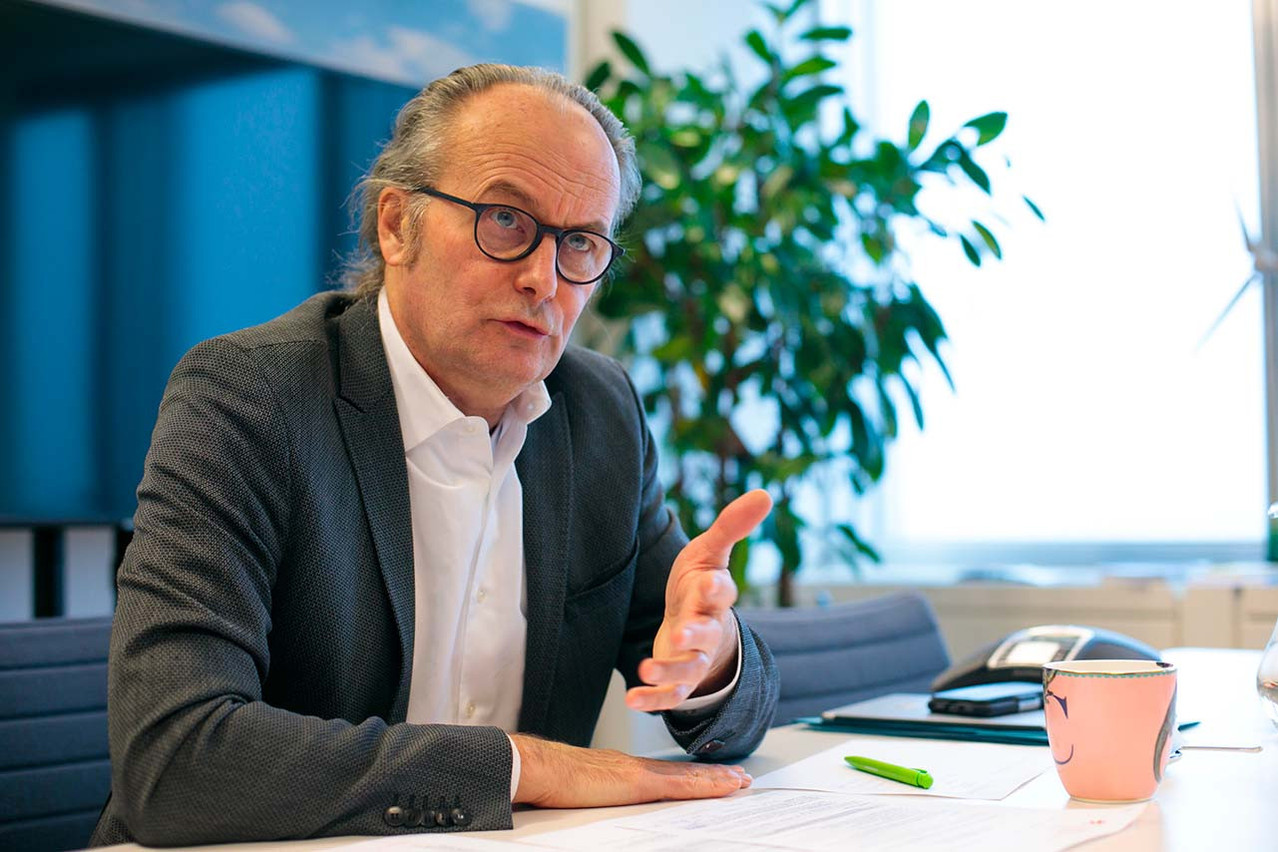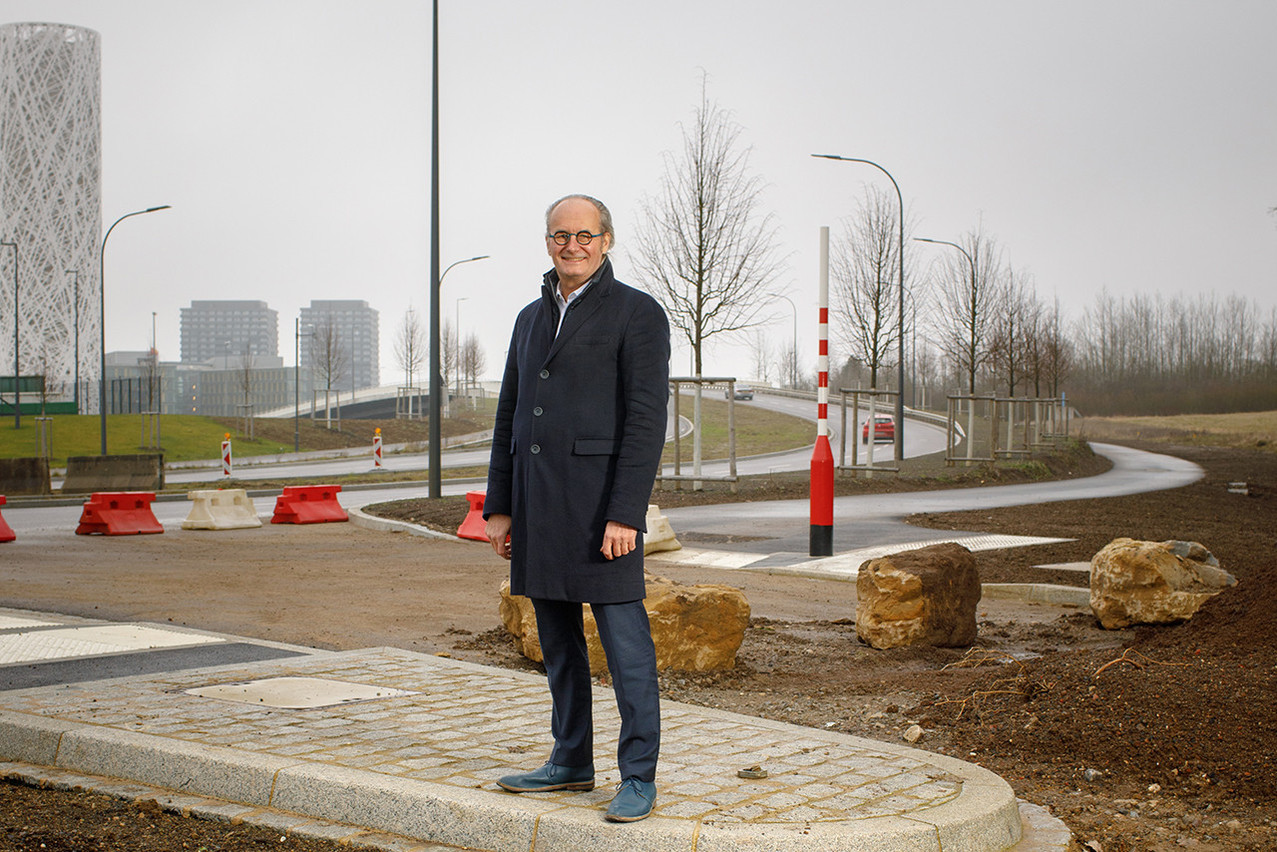What is the context and the reason for this consultation?
Claude Turmes: There are two contexts. The first is institutional: the last document governing spatial planning, the Master Plan for Spatial Planning, dates from 2003 and had a 2020 horizon. We are currently writing the vision for 2050, with an intermediate stage in 2035. This plan is a very important conceptual document and has cross-cutting repercussions on many areas, such as mobility, urban planning and agriculture.
The other context is climate and ecology, with the challenge of zero-carbon and the prevention of biodiversity loss, underpinned by the issue of zero-net artificialisation. Unfortunately, the development of the last 50 years has not taken into account the climatic dimension and has largely allowed the sealing of soils. Faced with the climate emergency and the loss of biodiversity, spatial planning must reinvent itself to put these constraints at the centre of its concerns. Furthermore, covid-19 underlined the importance of our relationship with the natural environment and our dependence on resources from the greater region, whether human or material. This part of the Luxembourg economy, which extends beyond our borders, must be better taken into account in our regional planning.
And why the form of a consultation?
When Florian Hertweck gave a presentation on Greater Geneva 2050, I said to myself that this territory was comparable in many ways to the situation in Luxembourg and that we could draw inspiration from their experience. However, we preferred to use the consultation method rather than the competition method in order to have more collaboration between the selected teams. It is a creative and intellectual process with which I am very satisfied and which has moreover attracted the attention of the European Commission with which we are working on a pilot project for other cross-border regions.
We are also in contact with the teams of the new European Bauhaus [editor’s note: a project which aims to accelerate the transformation of various economic sectors, such as construction and textiles, in order to provide all citizens with access to circular and less carbon-intensive goods] in order to fully integrate our project into this approach. Through this consultation, we will develop a programme that will put these pioneering ideas into practice and enable us to move forward effectively to meet the challenges.
Luxembourg, like other countries and regions in the world, must drastically reduce its carbon footprint. Currently, a person in the grand duchy produces an average of 24.5 tCO2e/year [editor’s note: data for 2018 provided by Exiobase], whereas the world average is 4.92 tCO2e/year per person. Knowing this state of affairs, what goals do you want to achieve?
We have ten years to win the climate battle. On the way to zero-carbon, we have this intermediate milestone of at least a 55% reduction. To achieve this, we can rely on green technologies, such as electric cars or heat pumps, but this will not be enough. We also need changes in societal behaviour. And spatial planning must make these changes possible and encourage them. If I live in an area where everything is planned for the car, I will be inclined to use my car.
On the other hand, if I live in a neighbourhood with wide pavements, safe cycle paths, services and shops nearby, I will find it easier to get around in other ways. This also applies to food. If I want citizens to reclaim their food, we need to bring market gardening back to the cities. Spatial planning is a catalyst for the changes in societal behaviour that you need to have a chance of moving towards zero-carbon, by creating green (nature), blue (water) and yellow (social) infrastructures.
One concept I would really like to apply: the transfer of development rights.
The four teams that took part in the final phase of the consultation have submitted their reports. The result of this work is being presented on 27 January. Any highlights you’d like to mention?
The first reports that were submitted in the intermediate stages were very conceptual. For this last stage, we wanted to be concrete. To do this, we proposed to the teams to work on different zones: one in Steinfort passing through Bertrange, the Cloche d'Or, Foetz and Esch-sur-Alzette; another concerning the Nordstad; and another the Esch-sur-Sûre region.
The French group Arep worked on Gasperich, the Cloche d'Or and Kockelscheuer and particularly on the interaction with nature, which is very important for city dwellers. In Gasperich, they renovated existing neighbourhoods, which is a real headache when it comes to not losing inhabitants, and created new housing opportunities as well. They’ve proposed, for example, to build a silo where people without garages can park so as to eliminate surface parking spaces. In addition, these silos can be used to gather sufficient critical mass to install a grocery store or a café. Thanks to this first step, it is possible to free up space in the neighbourhood and to create a more convivial and decarbonised environment.
What ideas have been developed for the Cloche d’Or, a neighbourhood still under construction?
They proposed to condense the existing buildings, but above all, with the arrival of the tram, they rethought the roads, creating much wider pavements with playgrounds and collective gardens. That helps make this austere area into a lively and people-oriented neighbourhood. I also urged them to work on the connection between the city and nature by looking at the link--which does not exist today other than by road--between the Cloche d’Or and Kockelscheuer. They also proposed the brilliant idea of installing a market garden production site around the halls of La Provençale.
Among the local actors who took part in this consultation is the group working around the University of Luxembourg. What are its ideas?
This group worked on urban renewal in the city centre, in Esch, as well as on a project to transform the Foetz commercial area into a new mixed neighbourhood served by the fast tram and which could become a pilot project for the circular economy. One of the ideas they have also developed is the transformation of petrol stations that are becoming obsolete with e-mobility and another on the potential of the fertile land that is located along the Route d’Arlon, in Luxembourg.
The large scale is also part of the reflection, notably with the work of architecture firm MVRDV. Can you summarise their proposal for us?
This group focused on the area between Luxembourg and Arlon, and more particularly on Steinfort, to find out what to do with these villages on the outskirts of the capital, which are currently dormitory villages and many of which are in flood-prone areas. They also looked at the case of Esch-sur-Sûre. This region is complicated because, since the 1960s, it has been deprived of a certain amount of development in order to protect its natural and water-related capital, but the state has never proposed any other compensatory measures. They support the idea that this region can become productive at the agrarian level, but also at the energy level, while proposing a new tourism offer which would also encourage more local stays for leisure, and thus contribute to reducing the carbon footprint linked to air travel for short relaxing escapes. One of the challenges for Luxembourg is also to create attractive places with an adapted green tourism infrastructure.

Claude Turmes: “After the official closing meeting on 27 January, we will produce a catalogue and a travelling exhibition from May onwards.” (Photo: Matic Zorman/Maison Moderne/Archives)
So there is one group left, the one led by 2001. What are its ideas?
These are ideas that are conceptually at a very high level. They have developed their ideas around the theme of “soil and people”. They worked on the Nordstad area in Bettendorf, which suffers from a lack of infrastructure and jobs in relation to the number of inhabitants, and also in the south in Helfent. The group has proposed a concept that I would really like to apply: the transfer of development rights, a principle that comes from the United States and which avoids the urban sprawl of villages and refocuses development where it makes sense. The principle is to propose to landowners an exchange of properties to densify already urbanised areas. This would create an interesting critical mass for the life of the village without denaturing its landscape.
All this remains theoretical for the moment. Do you think you will be able to implement these ideas in the short or medium term?
This is the challenge ahead of us: the transition from consultation to reality on the ground. After the official closing meeting on 27 January, we will produce a catalogue and a travelling exhibition from May. In addition, the various ideas will be presented to the municipalities concerned. All this work will lead to the writing of the new master programme which should enable the development of Luxembourg’s territory with a zero-carbon vision.
Luxembourg in Transition therefore integrates the cross-border dimension, which is wider than our own borders. How are you going to involve the actors of the various neighbouring countries in this vision of the territory? With whom should the project be developed?
The resulting work will be presented to the various ministers in charge of spatial planning in the greater region, and we will also meet the mayors of the various towns neighbouring our borders, because we need structural cooperation with the municipalities in our functional area. Fortunately, we have an effective tool in the new Interreg Grande Région programme, on cross-border cooperation between municipalities, which will enable us to structure cooperation on the French side as well as in Rhineland-Palatinate, or with the German-speaking community of Belgium.
This is essential, because the future of our economy depends on our ability to attract new talent. However, not all of these new people will be able to access affordable housing in Luxembourg and will go to live on the borders. We must therefore ensure a good quality of life, and of urban planning, in the area around Luxembourg. The Esch-Audun metropolis is being developed in this sense, by combining the research done for Luxembourg in Transition, but also Esch-Schifflange and the Internationale Bauausstellung. Because we must be aware that the current commuter model is not viable in the long term, neither ecologically nor humanly. Our attractiveness must return through quality urban planning in Luxembourg, but also in the border territories.
This article on Paperjam. It has been translated and edited for Delano.

